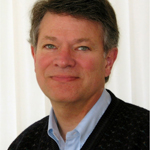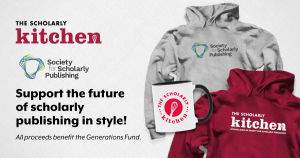Director, HighWire Press
 First, tell us a bit about yourself (hometown, current locale, family, hobbies, community involvement?). What is your current job? Describe some of your responsibilities, and how you or your organization fit into the scholarly communications web.
First, tell us a bit about yourself (hometown, current locale, family, hobbies, community involvement?). What is your current job? Describe some of your responsibilities, and how you or your organization fit into the scholarly communications web.
I’m originally from the Philadelphia suburbs, but have long lived in Palo Alto, near Stanford University. I live close enough to Stanford that it takes me longer to drive to work than to bike in, so I consider myself quite fortunate in terms of “green commuting.”
I’m the director of HighWire Press, a department of the Stanford University Libraries and Academic Information Resources. As one of the founders, we started HighWire in early 1995. In previous positions, I was responsible for information technology at Stanford, including academic databases such as library catalogs and administrative systems like student records, purchasing systems, etc. Some of the HighWire staff have been working together for 30 years at various organizations in Silicon Valley.
As director of HighWire, my role is to determine where the technology and publishing industries are going, how one of those might leverage the other, and how HighWire can best support its customers—publishers, editors—and its customers’ customers—the libraries, students, researchers, and clinicians. While this frequently involves working with new technology, it more often necessitates working with publishers on new ideas, opportunities, or problems they wish to address.
I also consider myself a “futurist” or “trendspotter” in that I try to watch what is happening in consumer and scholarly services and identify patterns that are just beginning to emerge. These new patterns, once articulated, can give publishers and editors a chance to think about how they might prepare for changes, or take advantage of them. I’ve been talking about “Publisher 2.0” for a while now, to determine if there is a coherent vision for how the all-digital workflows of end-users will change what we do in communicating with them.
Outside of work, my main hobby is photography—and volunteering gives me the opportunity to practice photography with community groups who provide services for those in our community who don’t have adequate food, shelter or medical care. I also volunteer with my church, which has a focus on social-justice and community-service projects.
What career path led to your current position?
Almost everybody I know in publishing has had a circuitous path to their current job. It is almost as if “circuitous” prepares you for the industry!
I arrived at Stanford as a grad student in English, and during this time I developed some early computer instruction methods for training students in grammar and composition. My Freshman English students and I enjoyed this training because we were using computers—this was back in the late 1970s, and computers were cool and fun—exotic rather than ubiquitous. In my studies, I was doing research on contemporary poetry, spending days with my “fingers doing the walking” in the card catalog. Then one day, a reference librarian showed me an online catalog. He was able to reproduce in about a minute what it had taken me three days to do in the card catalog—that really did change my life.
From there, I got into working on large library database systems such as those used for online catalogs. Silicon Valley was booming then, so I was no longer programming the systems, but managing the developers and working with the librarians. I managed the team that developed the first Stanford online “Card Catalog” back in the mid 1980s. We developed some novel search engine user interfaces, and even linked the library catalog to the Stanford Bookstore catalog so that people could borrow or buy a book from either system; this was quite unusual for the mid-80s!
I’ve always been involved in academic information systems, and with libraries. I am very good at talking with technology developers and researchers and librarians and serving as the “translator” among them. So, in 1994, when Stanford’s new library director, Mike Keller, decided that Stanford should develop an online journal service to help scholarly publishers move their information online in a responsible way, I jumped at the chance. (I was, at the time, responsible for administrative computing technology at Stanford, and worked for Stanford’s provost, Condoleezza Rice).
When we started work on what was to become HighWire, in January of 1995, the word “Mosaic” was new to people; you had to explain what a “web browser” was every time you used the term; and PDFs were a brand-new technology. We partnered with the American Society of Biochemistry and Molecular Biology, the society that owns the Journal of Biological Chemistry. We put it online in under five months, an amazing feat since it published about 1,000 pages per week! Because we started with such a large journal, we had the insight—novel for the time—that a database and search engine should be at the core of an online journal site! There were five of us at the start, in a small set of cubicles about 200 yards from where Google was getting started on campus. Today HighWire has about 140 staff. (Google is a little bigger now…)
Where do you see scholarly communications heading, and what new directions interest you most?
Scholarly communication is being affected by the internet in the way many other communication systems are: there is much more communication happening, with many more choices, channels, creators, and participants than ever before and the structure of the industry is changing very rapidly. With more people seeing and sharing more information, traditional information pathways are being challenged and disrupted. Some of the income streams that support internet communication—such as commercial advertising—don’t work as well for scholarly communication whose current systems are designed to surface and resist conflicts of interest (especially in medical publishing). The whole balance of costs and benefits is being stirred up, but so is the set of constraints and assumptions. It is still early days to pick any single horse to ride as an income stream—and the same goes for picking editorial models and information architecture. Many people in leadership positions in academic societies are accustomed to rational, evidence-based business discourse; while others are attempting to shake up the system by introducing additional types of discourse—political and moral—to the debate. HighWire itself tries to be open to all these parties so they can conduct experiments and compare notes.
I think we can look to other, related, information industries that move faster than scholarly publishing does—such as news media, music, television, film—to see some of our alternative futures. We should do this not only to look for metaphors and models, but to foreshadow how the students and researchers of the future will expect to create and consume information. My point is that they won’t see scholarly information as a thing apart from all the other types of information they manage with their various technologies and workflows.
Some of the next “wave” of innovation in scholarly publishing will come from the rate at which other sorts of non-journal content (such as books) is going online. With a more complete canon of the literature available online in more disciplines, new consumer demands will drive new business models and demand more innovation and flexibility from publishers. Much (but certainly not all) of the early innovation in scholarly publishing online was driven by STM journals, and in many ways that innovation has ended up setting our models for delivery of scholarly information online. At HighWire, we host many different kinds of books (including the online edition of the Oxford English Dictionary) and so we have been thinking about this for quite some time. I am now seeing a new wave of innovation to account for the needs of researchers in the social sciences and humanities, but there is much more that can be done to serve scholars in these areas. Standards—or perhaps “best practices”—will emerge for finding, linking, and integrating book content with journal content (and we may even see the functional distinction between books and journals being to merge), integrating audio and video, integrating new mobile devices (Kindle, iPhone), etc.
What advice would you give to people interested in a career in scholarly communications? What new roles or opportunities do you see emerging in the field?
Understanding the mechanics and philosophy of the web is very important, so I’d say if you are considering a career in the business of scholarly communication today, you need to pay attention to that. I speak sometimes on the topic of “Publisher 2.0”, referring to the fact that publishers who are best prepared for the future are those who are prepared to move nimbly in an increasingly networked world. The rate of innovation and change is quite rapid—I see some publishers creating roles in marketing and usage analysis to monitor and anticipate trends, both in their readers’ behavior and in the market at large. I think we’ll also see more staff devoted to thinking about how to create and foster online communities around journals and other publications, and how to monetize new “products” around those publications and communities. As mentioned above, we’ll certainly see the need for skill sets in audio and video creation and management, not just managing text. We will see a focus on devices, not just media, with specific requirements like the iPhone and the Kindle. Information will be moving to and from the environment and workflow of the user, so people with insight into that environment and its “tools and rules” should be very good for the industry!
If we think how much things have changed in the last decade of electronic publishing, we can imagine that the pace will certainly increase over the next. So people with key insight for our future are now starting high school and college!
Profiled February 2009

